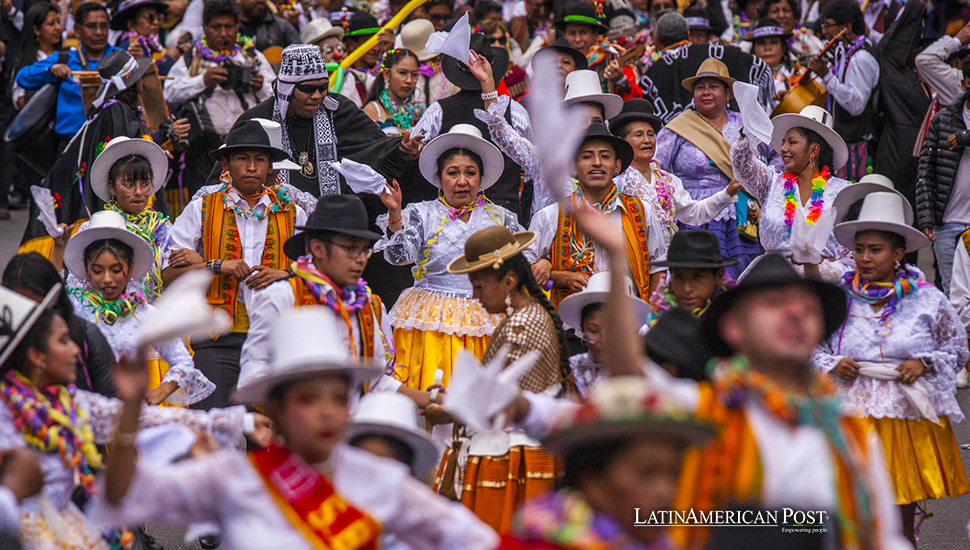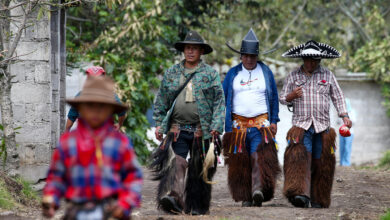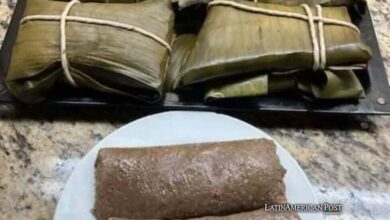Celebrating Diversity: Jisk’a Anata Carnival Parade in La Paz, Bolivia

Amidst the vibrant beats of Bolivia’s diverse carnival celebrations, the Jisk’a Anata Parade in La Paz took center stage, championing inclusion with dancers, including those with disabilities, weaving through the city’s streets.
Celebrating Cultural Diversity in La Paz
In the heart of La Paz, Bolivia’s cultural tapestry unfolded as the Jisk’a Anata Carnival Parade took to the streets, infusing the city with a riot of colors, rhythms, and messages of inclusivity. Led by municipal authorities alongside the ‘Tawaqu,’ symbolizing the festival’s queen, the parade showcased Bolivia’s rich cultural heritage with a spotlight on diversity and traditional Andean customs.
Against a backdrop of looming gray skies threatening rain, the procession commenced, with Pamela Gutiérrez, an Afro-Bolivian, embodying the spirit of the festivity as this year’s ‘Tawaqu.’ In her words to EFE, Gutiérrez expressed her joy in representing her culture and emphasized the significance of Jisk’a Anata in celebrating diverse traditions and the carnival spirit while being mindful of conserving water during a recent drought.
Accompanying the procession were groups of ‘pepinos,’ ‘ch’utas,’ and ‘cholitas,’ central figures in La Paz’s carnival. The ‘Pepino,’ adorned with masks and vibrant costumes, symbolized urban joy and vitality. At the same time, the ‘ch’uta’ and ‘cholita’ introduced traditional Aymara customs, including gratitude to ‘Pachamama,’ the Earth Mother, for her bounties—a practice deeply rooted in Bolivia’s western region.
Bridging Past and Present through Dance
The ‘ch’uta,’ characterized by distinctive attire and rhythmic movements, danced alongside one or two ‘cholitas,’ emblematic Aymara women showcasing their finest attire. Together, they added cultural richness to the festivities, bridging past and present through dance and tradition.
Originating three decades ago, Jisk’a Anata draws its essence from Aymara traditions, marking the beginning of the carnival season in the Andean world. As Juan Carlos Tapia, president of the Andean Society of Folkloric Ensembles, explained, the festival coincides with the start of the harvest season in rural areas, symbolized by the gathering of ‘llullus’—the first potatoes.
The festivity extends beyond La Paz, with Tuesday heralding ‘Jach’a Anata’ or Grand Carnival, dedicated to honoring Mother Earth—a tradition now observed in regions across Bolivia and among Bolivians abroad.
With 67 fraternities or troupes and 32 dance forms participating, Jisk’a Anata epitomizes Bolivia’s diverse cultural landscape. Tapia proudly asserts it as the country’s most inclusive folkloric event, boasting participation from groups like dancers with visual impairments, a testament to its commitment to diversity and accessibility.
A Melange of Dances
The parade featured a melange of indigenous Andean dances such as ‘khantus,’ ‘tarkeadas,’ and ‘moseñadas,’ interspersed with contemporary favorites like ‘diablada,’ ‘kullawada,’ ‘morenada,’ ‘caporales,’ ‘tinkus,’ and ‘salay.’
While various regions across Bolivia host similar carnival parades, the pinnacle of Bolivian folklore remains the Oruro Carnival. Declared a Masterpiece of the Oral and Intangible Heritage of Humanity by UNESCO in 2001, the Oruro Carnival attracts locals and tourists alike to witness its dazzling display of traditional dances and cultural heritage.
Also read: Peru Recovers Ancient Pre-Hispanic Helmet in Cultural Heritage Rescue Operation
As Bolivia’s carnival season continues to captivate with its diversity and cultural vibrancy, events like Jisk’a Anata serve as poignant reminders of the power of tradition, inclusivity, and celebration in fostering unity amidst diversity.





